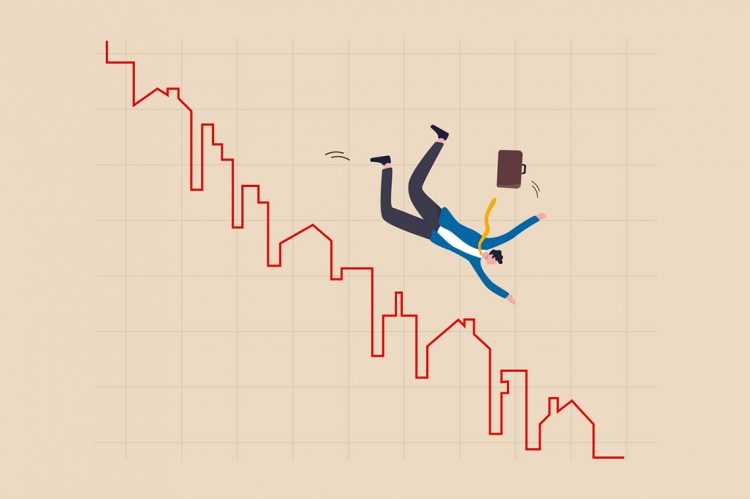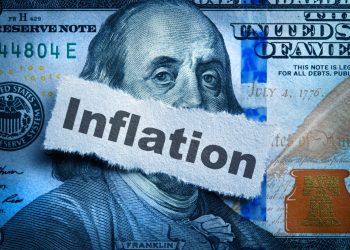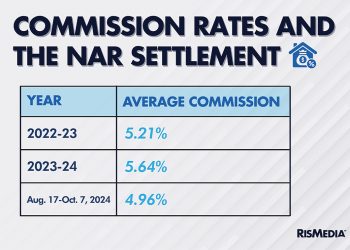While affordability challenges aren’t a new phenomenon for the housing market, recent mortgage volatility has been doing a number on an increasing number of U.S. homebuyers—many of whom are hitting the sidelines. According to a recent Zillow market report, the result is another month of declining home values.
The report indicates that the typical home value in the U.S. dipped 0.3% from July to August, standing at $356,054, as measured by the raw Zillow Home Value Index. That marks the most significant monthly decline since 2011 and the second consecutive month of a price drop.
Home values saw a slight decrease in July—0.1%. While both declines are modest at best—typical home values are still up 14.1% YoY—they serve as another example of the changing tides in the housing market, which came off arguably its best two years in history.
Zillow attributed the value dips to the recent surge in mortgage rates, which neared 6% in June. Coupled with the “historic rise in home prices” during the pandemic, spiking mortgage rates pushed the monthly mortgage payment on a newly purchased typical home from $897 in August 2019 to $1,643—up 83%.
According to the report, the runup in costs has hampered market competition, evident in the increased time the home stayed listed in August. The typical time before a listing goes pending is 16 days, three days more than in July.
Key highlights:
- The typical home value fell 0.3% from July, the largest monthly decrease since 2011.
- Values fell the furthest month-over-month in San Francisco (-3.4%), Los Angeles (-3.4%), Sacramento (-3.2%) and Salt Lake City (-2.6%).
- Home values rose from July to August in 12 of the 50 largest U.S. markets, led by Birmingham (0.9%), Indianapolis (0.5%), Cincinnati (0.4%) and Louisville (0.2%).
- Competition for homes is strongest in affordable metros and weakening in expensive markets.
- Lack of buyer competition has raised inventory—up 1% from July—and listings’ time on the market.
- Roughly 28% of listings nationally received a price cut—slightly higher than August 2019’s rate of 22%.
- The share of listings with a price cut is highest in Salt Lake City, Phoenix, Las Vegas and Austin.
- The lowest price-cut market rates are Milwaukee, New York, Hartford and Boston.
- Rent growth continued to ease in August, with typical rent of $2,090 now 12.3% above that of last August—down from a peak of 17.2% annual growth in February.
- Annual rent growth is strongest in Miami (21.9%), New York (17.9%), Orlando (17.5%) and San Diego (17.1%).
The takeaway:
By now, you’ve heard that the housing market has experienced its share of changes from the summer of 2021, which saw seismic housing price growth, while mortgage rates were still near record lows.
As the market shifted away from the feverish behavior this summer, those days have come and gone.
While the signs of waning home price tags are there, Zillow’s report underscores a deep-seated issue that isn’t likely to disappear: buyers are still struggling with the expense of homeownership.
Even with a modest decline, the surge in mortgage rates has added another challenge to the widening affordability strain by showing what Zillow experts called an “astronomical growth” of expenses for new homeowners over the past three years.
“Substantial day-to-day and week-to-week rate movements mean that many potential buyers are able to qualify for a loan one week, but not the next, or vice versa,” said Zillow Chief Economist Skylar Olsen in a statement. “Even buyers able to afford a house at current rates could feel frozen, waiting for mortgage rates to fall dramatically again like they did from the end of June to mid-July when rates dropped 50 basis points in just two weeks.”
Olsen also stated that “as the share of median household income needed to pay monthly mortgage costs now stands beyond the 30% level considered to be a financial burden, uncertainty itself could be holding up a large population of buyers who could otherwise still afford to move forward with a loan. It’s likely that this problem will continue until markets stabilize and return to some semblance of normalcy.”
To see the full report, click here.











